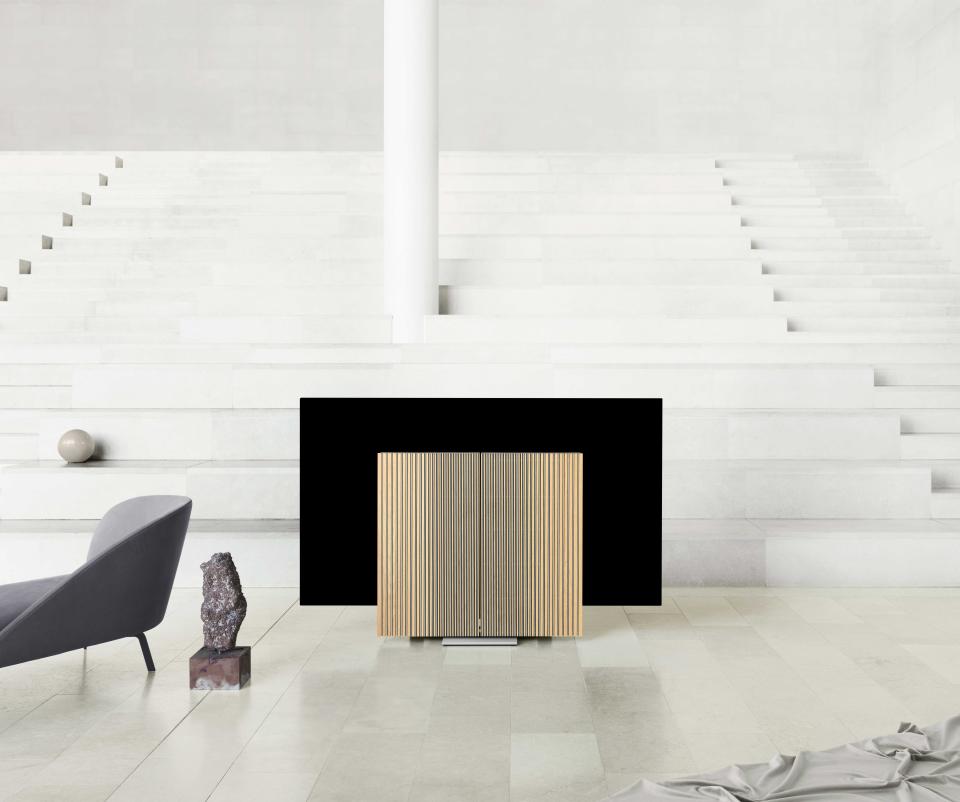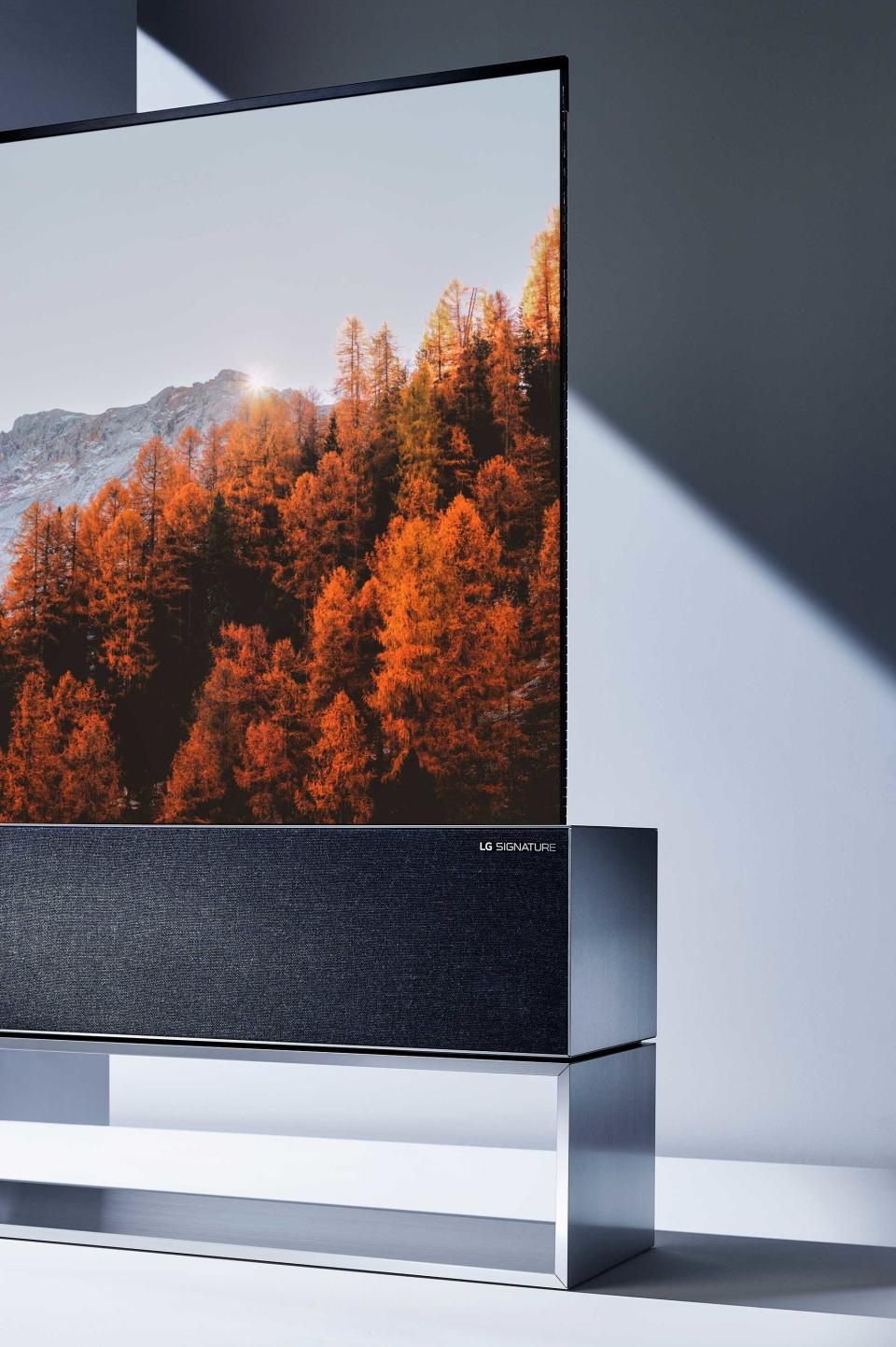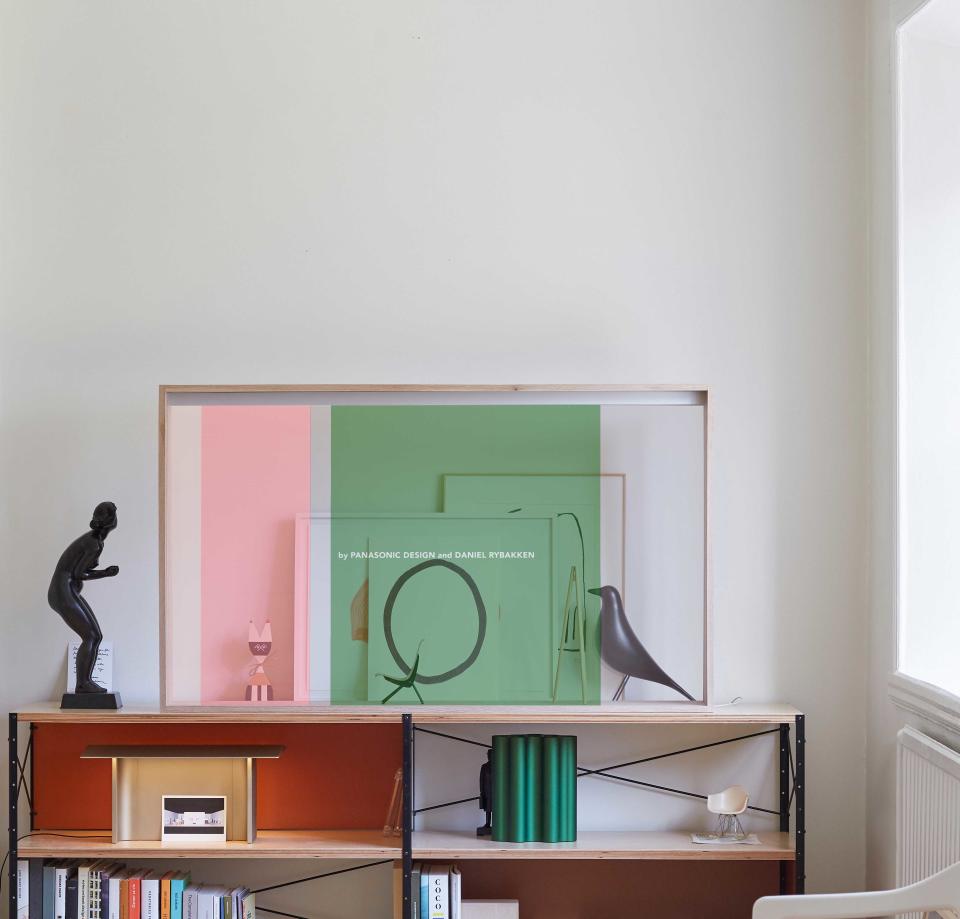Sick of Decorating Around a TV? Tech Companies Think They’ve Found Solutions
Ever since its infancy, the television set has had the preternatural ability to dominate the design of any room. By 1949, The New York Times observed that the design of domestic spaces had a curious “tendency to make the television set the focal point of interest”—furniture and all.
Seventy years later—despite technological leaps and doomsday headlines about cord-cutting—designers are plagued by the exact same phenomenon. “TVs proscribe a layout and an orientation,” explains Mike Holland, who heads up industrial design at Foster + Partners. “You might have an apartment with a wonderful view, but the furniture might be orientated towards an internal wall because that’s where the TV is.”
Designers and consumers alike have devised clever DIY solutions to diminish a TV’s presence: propping paintings over them; integrating them into cabinetry; artful digital backdrops. “It's always the dilemma—what to do with a TV,” affirms stylist Mieke Ten Have.
Three new innovative TV sets revealed in Milan last month offer solutions to this quandary through a synthesis of tech and design wizardry. And what’s more, these standout new offerings—from Bang & Olufsen, LG, and Panasonic—hope to make the technology something to showcase, rather than hide. “It’s about more than just addressing what is the next thing in television,” insists industrial designer Torsten Valeur. “It’s about how to turn the idea of a big, black screen into something more interesting.”

TVDesign01.jpg
Photo courtesy Bang & Olufsen
TVDesign02.jpg
Valeur was tapped by Bang & Olufsen to rethink its standard television, a product the Danish consumer electronics company has offered since the 1950s. Though past designs were valued for their design and quality (a 2016 ad campaign depicted Bang & Olufsen owners “humble bragging” about their new TVs), in this design, the company sought to eliminate the perception of an obtrusive machine altogether. “During the design process, we realized that if you bring the screen down in height, it more or less disappears out of your eyesight,” says Kresten Bjørn Krab-Bjerre, senior concept manager at Bang & Olufsen. “It was a eureka moment for us.”
During Salone del Mobile, Valeur and Krab-Bjerre unveiled Beovision Harmony, a 77-inch OLED TV—but you wouldn’t know it to look at it. When not in use, the television resembles a low-slung oak sculpture. With the touch of a button, its panels unfold like scissor doors on a Lamborghini to reveal a speaker system while the screen mesmerizingly rises into view. Valeur sees it as instilling the notion of “theater” back into home theater. He compares it to Pantomimeteatret, an outdoor stage in Copenhagen known for its fanning peacock-tail curtain. “It celebrates that moment of transformation,” he says of the television design. “It’s a very emotional product.”
Meanwhile in Milan, Foster + Partners showcased the fruits of an 18-month partnership with Korean electronics company LG: the world’s first rollable OLED TV.

TVDesign04.jpg
After LG first approached Foster + Partners (a firm, in the words of LG’s Shin Cheol-Woong, that “always looked to drive innovation in design”), the team got to work investigating how a typical TV set impacts a room’s interior architecture—especially when off. “We approached the design with the aim of creating something that didn’t look like a traditional piece of technology, that was very simple and very sculptural,” says Holland of Foster + Partners.
Though its name would indicate otherwise, the resulting LG SIGNATURE OLED TV R is as sleek and technologically advanced as one of Foster + Partners’ buildings. When on, the screen raises (Holland and his team even helped develop the mechanism) to varying heights to accommodate music, photo-viewing, or streaming. When off, its flexible screen is housed, furled up like a poster, in a low-slung, rectilinear aluminum volume. One might even mistake it for a particularly gorgeous radiator. “It doesn’t give too many clues,” Holland says.
Where LG is pushing advancements in screen technology, Panasonic is seeking to eliminate the appearance of them. The tech company’s product development branch, Panasonic Design, along with Swiss design company Vitra and designer Daniel Rybakken unveiled Vitrine, a transparent TV prototype. At first glance, it appears to be a glazed display case, framed in blond wood. But the glass actually is an OLED screen, with technological components and lighting elements concealed in the surrounding frame. “The dominating large black surface is instead transformed into something that can highlight what’s behind, what’s displayed, or nothing at all,” Rybakken said in a statement.

TVDesign06.jpg
The jury is still out on the Vitrine’s picture quality, and the prototype won’t be available to consumers any time soon. But according to Panasonic, the company “is actively evaluating feedback about the device and looking into market demands.” Both the Beovision Harmony and LG SIGNATURE OLED TV R, meanwhile, will be available to consumers later this year.
So will interior designers adopt these technologies with open arms? Ten Have, for her part, expressed interest in the Vitrine. Designer Miles Redd, when reached by phone, also preferred the Vitrine, and could envision the rollable LG TV in an appropriately modern interior. Until the technologies are available, however, Redd will continue to tuck televisions in bookcases or place in a discreet corner of a room. “TVs are necessary,” Redd admits, “and rooms without screens sadly gets underused.”
He’s right. According to the latest stats from Nielsen, U.S. adults still spend 4 hours and 13 minutes daily with live or time-shifted (e.g. DVR) TV. And though Americans are owning fewer television sets, LG, for its part, saw record-high profits for its home entertainment products in 2018, which the company attributes to premium product offerings like OLED TVs.
As for that perfect consumer? According to LG’s Shin, “They have always been out there, waiting for the technology to catch up with their imaginations.”
Originally Appeared on Architectural Digest

